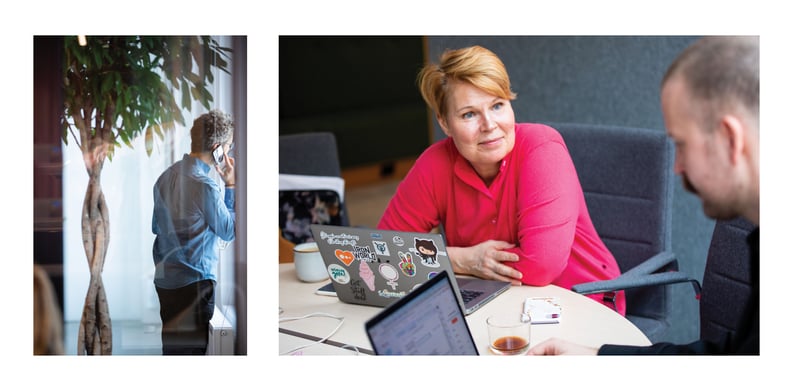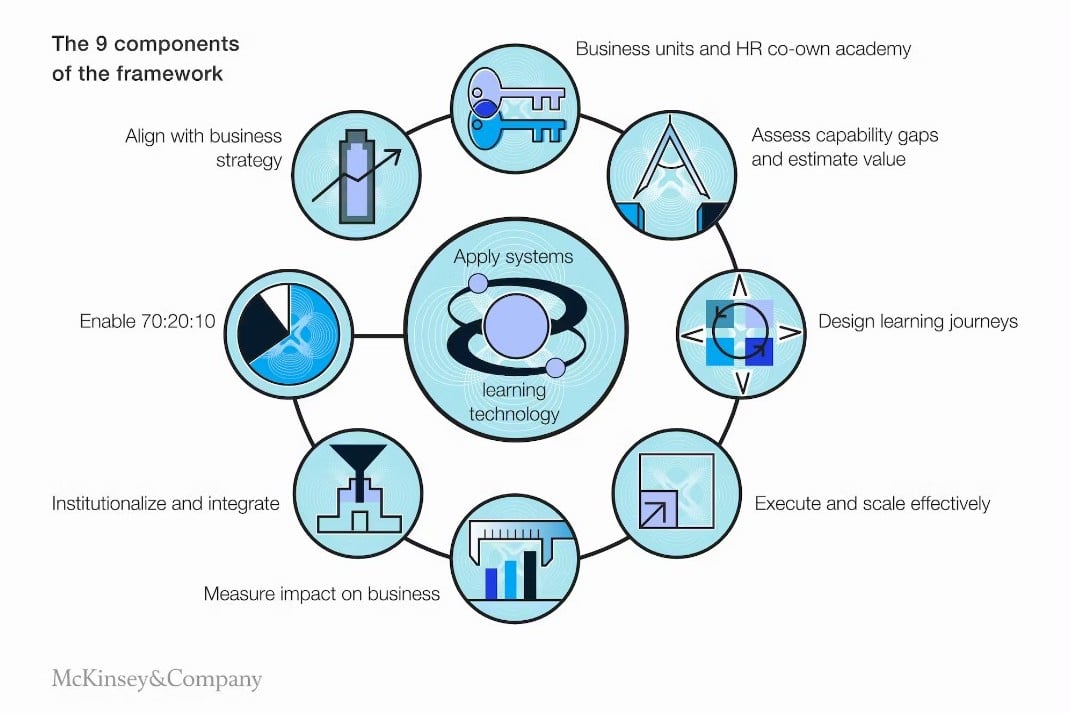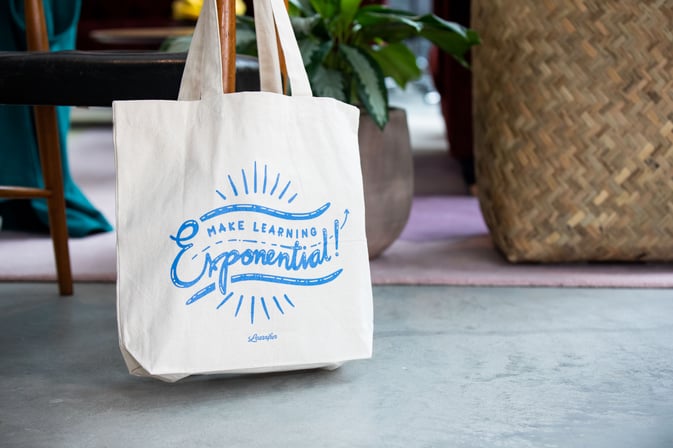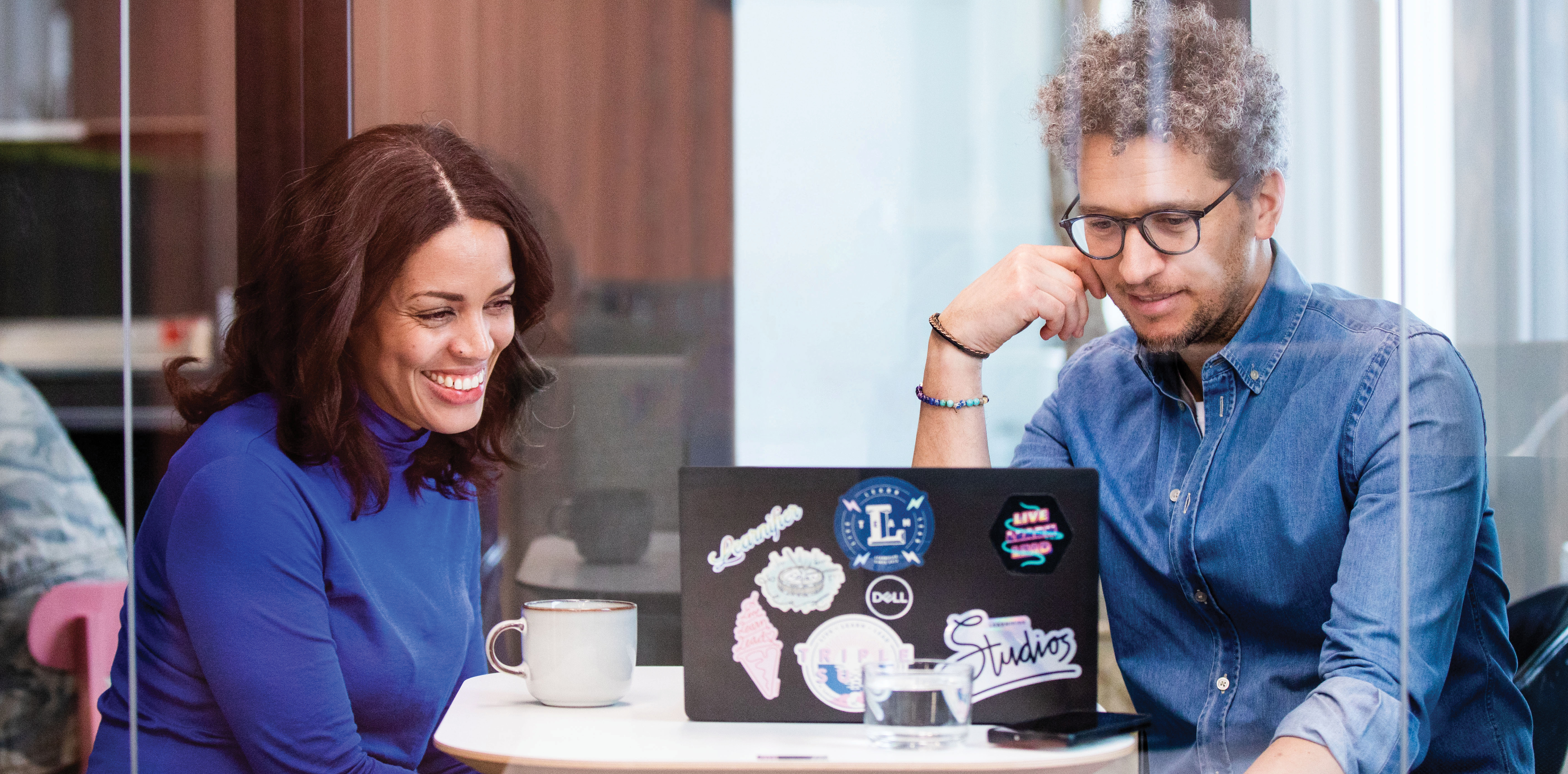Creating a learning strategy with real business impact can work wonders for modern companies and organizations. While getting that strategy in place is easier said than done, using the right tools will help immensely. Anna Gullstrand, Chief People & Culture Officer at Mentimeter, knows all about the do's and don'ts on the subject matter. We let her walk us through the building blocks of the strategy and share her best practices, learnings, and mistakes from Mentimeter's own growth journey.
First and foremost: Why create a learning strategy? Well, the benefits are in fact numerous. For instance, having a good learning and development strategy in place increases the business ROI and helps you stay ahead of the curve. It also boosts intrinsic motivation and retention, as a company dedicated to learning attracts talented people looking to maximize their capabilities.
Industry ace Anna Gullstrand has seen the impact of a good learning and development strategy up close. In recent years, she has managed the learning infrastructure build-up at Mentimeter, where she currently holds the Chief People & Culture Officer position. The company has been successful in supporting higher education and learning practitioners globally. But establishing internal learning strategies in your own company is a whole different story.
 Psst! Want to go even deeper on how to build a learning culture in your organization? Download our free guide, To create a learning culture – How we know we have one and how we can do even better
Psst! Want to go even deeper on how to build a learning culture in your organization? Download our free guide, To create a learning culture – How we know we have one and how we can do even better

Anna Gullstrand, Chief People & Culture Officer, Mentimeter
– We sure did a lot of things wrong early on. Although we’ve always had a lot of ongoing learning initiatives at Mentimeter, we never sat down in the different teams and really connected them to our actual needs, business strategy and impact. In hindsight, that’s what we should have done, Anna Gullstrand explains.
"We sure did a lot of things wrong early on."
Even though Mentimeter had a budget for learning and development, she feels the management put far too much responsibility on the employees who were passion-driven but not in line with the overall business goals. Another early mistake was not launching sales-specific training and onboarding in time.
– We started when there were 100 people in the company, which was far too late. In sales, training and performance has a very high correlation, so it’s ignorant to not prioritize it. In the beginning, we also lacked in supporting the department heads in their learning strategy.

Coming out stronger
Today, Mentimeter has a sales strategy, a five-star onboarding, and a culture of always iterating, improving, and learning by doing.
– We now have everything from role-specific trainings to cohort-based leadership programs and trainings in mental health, security, inclusion and much more.
However, Anna explains, this is something they’ve created out of passion, rather than by having a clear learning and development strategy.
– With all this in place, we are looking to create greater clarity and a solid framework.
Getting the tools in place
The ultimate purpose of a learning and development strategy is to deliver on the business goals. Anna believes this can be achieved by emphasizing knowledge, skills, mindset and beliefs, values, and behavior and habits. You also need to break down which parts are for the whole company, department and role specific, and for individual contributors and leaders.
– A tip is to double down on the leader part, as it’s been proven that great management leads to retention, motivation and engagement.
Creating the framework for a successful learning and development strategy, Anna takes inspiration from the following 9 components identified by McKinsey, starting with the alignment of the business strategy.

Source: McKinsey
– At Mentimeter, we apply these tools to four specific areas: role specific skills and knowledge, people skills and knowledge, leadership and management, and lastly compliance and operations.
People skills emphasizes communication, emotional intelligence and other things each employee needs to know to help create a better culture. For role specific skills and knowledge, Mentimeter works with content partners as it’s scalable, focuses on best practices, and gives an outside perspective. Currently aimed at certain teams, the next step is to involve everyone at the company, and identify business needs, gaps and solutions.
Going to boot camp
Mentimeter also has a sales-specific training consisting of onboarding and sales development programs. To seamlessly administer the learning, they use an LMS that houses all different paths and content.
– Our sales boot camp, which lasts for an intense couple of months, is role specific and administered through a variety of different channels. These include live sessions, self-guided courses in our LMS, videos, certifications, and many engaging Mentis.
"It is important to make the onboarding an immersive learning experience."
Anna talks about “making hay while the sun shines” which translates to the importance of good onboarding as part of the learning and development strategy. When a new employee enters the company, they are super excited, and leaving them with a great first impression will surely pay off in the long haul.
– It is important to make the onboarding an immersive learning experience and to ensure that everyone gets up to speed on strategy, business models and GTM. Our onboarding is delivered by both leaders and employees at the company, which is great since they learn just as much from the process as the recruit.

Deciding on the magic mix
Micro-learning or live sessions? Remote or classroom? Perhaps a mix of several options? Unfortunately, there is no one-fits-all solution to creating a learning and development strategy. It’s up to each company to shape their own path, something that requires real dedication.
In the end, the important thing is what you make of the tools at hand. For instance, Mentimeter focuses a lot on creating holistic learning experiences, meaning they design for both body, brain, soul, and heart. By “serious play,” Anna and her coworkers seek to unlock the intelligence of the room.
– Apart from deciding on the mix of learning methods, I think we all need to be curious about Edtech in general. Make sure to explore different learning platforms for blended learning, management systems, live training accelerators and not least AI-powered tools. All of this will help you scale, automate, and measure impact, Anna concludes.
![]() Interested in more insights from Anna Gullstrand?
Interested in more insights from Anna Gullstrand?
Check out her recent webinar on creating a learning strategy, hosted by Learnifier.
Learnifier is a learning platform used by hundreds of companies and organizations to quickly and easily share knowledge and create training. Since 2012, we have helped over 300 companies digitize and adjust their skills development for modern-day challenges.
.png?width=153&height=58&name=Learnifier%20TextLogo%20NearBlack%20-%20PNG%20MEDIUM%20-%20800px%20(2).png)






